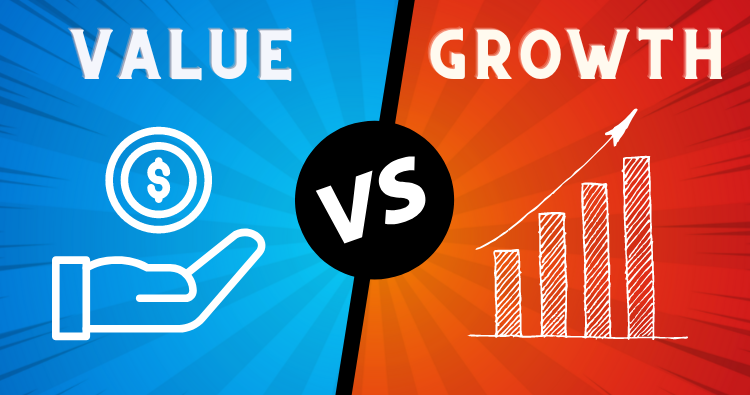-
02, Hardik complex, opp.
Tin Hanuman Tempel,
Highway Deesa-385535 -
Call Us On
+91 9824273056 -
Mail Us At
info@jkinvestment.in
02, Hardik complex, opp.
Tin Hanuman Tempel,
Highway Deesa-385535
Call Us On
+91 9824273056
Mail Us At
info@jkinvestment.in

When looking at stocks and shares, there are two main strategies you can use to invest. They are value investing and growth investing.
Value versus growth, which is it? There's no right or wrong when it comes to investing methods. Each method has its pros and cons, but we need to define them to understand these investment methods.
Let's take a closer look at these two stock investment techniques, examining their advantages and disadvantages.
A value investor seeks companies that are undervalued and invest in them. Typically, these businesses are undervalued and progress at a snail's pace. They do, however, have strong fundamentals. These investors believe that the market will quickly understand the value, and the stock's share price would 'catch up,' resulting in substantial gains.
If we look at metrics like the Price to Earnings Ratio, value stocks have a lower PE ratio than other stocks, making them attractive to value investors.
The low PE ratio can be because of multiple factors such as economic conditions, consumer behaviour, and the industry's cyclical nature. During market highs and lows, value equities often have reduced price volatility.
A growth investor seeks companies with a higher-than-average growth rate. Revenues, balance sheets, cash flows, and profitability all reflect consistent and substantial growth. Growth stocks can be large-cap, mid-cap and small-cap stocks. These companies have new products, services, and prices that beat their competitors.
Growth stocks have a sound track record of profit growth and are projected to continue with this trend in the foreseeable future. This steady rate of growth is essential for attracting potential investors. Furthermore, because of their greater price-to-earnings ratio, these stocks are more 'expensive' than other stocks. It is because investors are willing to pay a higher price for these equities than they are currently earning. After all, they believe future earnings will justify the price.
It's important to think about how long it took and how much risk was involved in getting the results you want when comparing the performance of growth and value stocks.
Because they are frequently found among larger, more established companies, value stocks are at least theoretically regarded as having a lower level of risk and volatility. Even if they don't return to the analyst or investor's target price, they may still provide some capital gain, and these companies frequently pay dividends.
On the other hand, growth stocks typically do not pay dividends and instead reinvest retained earnings to help the firm grow. Growth stocks have a higher risk of losing money for investors, especially if the company fails to meet growth projections.
For example, a company with a hot new product may have its stock price drop if the product is a failure or has design defects that prevent it from functioning correctly. Growth stocks, in general, offer the greatest potential profit while also posing the most risk to investors.
So, if we have to summarize, we can say that growth stocks can outperform when interest rates are down, and company earnings are growing. However, growth stocks may take a hit when the economy is contracting.
They may do well when the market recovers, but value stocks are more inclined to underperform in a long-term bull market.
This blog is purely for educational purposes and not to be treated as personal advice. Mutual fund investments are subject to market risks, read all scheme-related documents carefully.
Disclaimer
JK Investments is a registered Mutual Fund Distributor (ARN-162824). We offer execution-only services and do not provide investment advice. Mutual Fund investments are subject to market risks. Please read all scheme-related documents carefully. JK Investments deals only in Regular Plans and earns a trailing commission. Direct Plan options are available, but we do not earn any commission on them. Past performance is not indicative of future results. For more detailed information go to Disclaimer
AMFI Registered Mutual Fund Distributor – ARN-162824 | Date of initial registration – 01 January 2018
* Terms & Conditions apply
Disclaimer | Disclosure | Privacy Policy | AMFI Risk Factors | Terms and Conditions